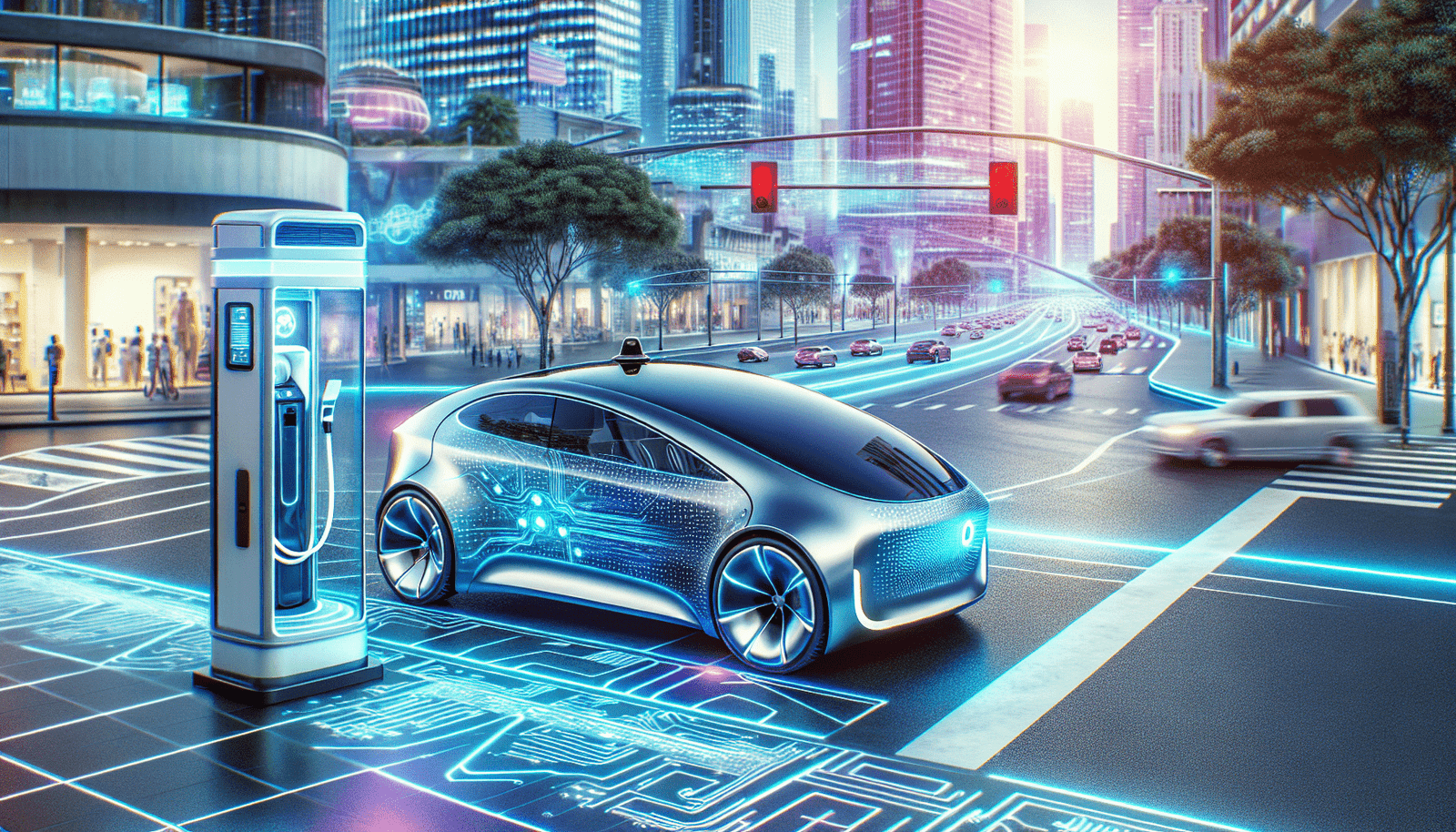Have you ever imagined what it would be like to step into a car, sit back, and let it take you to your destination without lifting a finger? The thought of autonomous vehicles—those self-driving marvels of technology—has captured my imagination for years. As we look ahead, the role of these vehicles in urban transport appears to be not just futuristic fantasy but a rapidly approaching reality.
Understanding Autonomous Vehicles
When I think of autonomous vehicles, I picture cars equipped with high-tech sensors, cameras, and software that allow them to navigate without human intervention. These vehicles have been engineered with advanced capabilities that include detecting obstacles, understanding traffic signals, and even making real-time decisions to ensure a safe journey.
Levels of Autonomy
Autonomous vehicles are categorized into different levels based on their degree of self-driving capability. The Society of Automotive Engineers (SAE) has established a classification system that ranges from Level 0, where the human driver is fully in control, to Level 5, where the vehicle can operate independently in all environments without human input. Understanding these levels helps to break down exactly what makes a vehicle “autonomous.”
| Level | Description |
|---|---|
| 0 | No Automation: Human driver controls all functions. |
| 1 | Driver Assistance: The vehicle assists with either steering or acceleration/deceleration. |
| 2 | Partial Automation: The vehicle controls both steering and acceleration/deceleration but requires human oversight. |
| 3 | Conditional Automation: The vehicle can perform most driving tasks independently but still requires the human driver to take over when requested. |
| 4 | High Automation: The vehicle can handle all driving tasks in specific environments without human intervention. |
| 5 | Full Automation: The vehicle can operate in any environment and there is no need for human intervention whatsoever. |
As I navigate through these levels, I can’t help but feel a sense of excitement at the possibilities that lie ahead.
The Role of Autonomous Vehicles in Urban Transport
The rise of autonomous vehicles has the potential to revolutionize urban transport. With growing populations in cities around the globe, the demand for efficient transportation solutions is more pressing than ever. I often ponder how self-driving cars can ease traffic congestion, reduce emissions, and enhance overall safety on the roads.
Reducing Traffic Congestion
Imagine a future where fewer cars are on the road and traffic flows smoothly at all hours of the day. Autonomous vehicles use advanced algorithms and real-time data to optimize routes, potentially reducing the amount of time spent in traffic. This efficiency could translate into less frustration for commuters and a more pleasant urban environment.
Enhancing Safety
According to statistics, human error is a leading cause of traffic accidents. By removing the unpredictability of human drivers, autonomous vehicles have the possibility to dramatically reduce the number of accidents on our streets. Safety features such as automatic braking, lane-keeping assistance, and obstacle detection are all part of the autonomous package.
Environmental Benefits
Given the increasing concern for our planet, the environmental benefits of autonomous vehicles cannot be overlooked. Many autonomous vehicles are electric, which means they contribute to a reduction in greenhouse gas emissions. Moreover, by optimizing routes and reducing congestion, they help conserve energy and minimize pollution in our cities.
The Current State of Autonomous Vehicles
At this moment, the technology for autonomous vehicles is advancing rapidly. Many companies, including tech giants and traditional automotive manufacturers, are investing heavily in research and development. I often read about the latest advancements, and it’s incredible to see how quickly things are progressing.
Pilot Programs and Testing
In various cities across the world, pilot programs are being launched to test autonomous vehicle technology in real-world settings. These programs provide critical data that will guide the future of autonomous transport.
For instance, companies like Waymo and Tesla have implemented test programs in specific urban areas, which allow them to refine their self-driving algorithms and enhance their understanding of urban driving conditions.
Regulatory Landscape
As we move closer to integrating autonomous vehicles into our urban transport systems, there’s a growing conversation about regulations. I understand that creating a legal framework for these vehicles will be vital to ensuring their safe deployment on public roads.
Each country has its own approach to regulating autonomous vehicles, and many jurisdictions are currently drafting guidelines that will govern testing, liability, and safety standards. These regulations will play a crucial role in how quickly autonomous vehicles become a common sight in our cities.
Challenges Facing Autonomous Vehicles
Despite the excitement surrounding autonomous vehicles, several challenges remain. Addressing these obstacles will be essential for ensuring a smooth transition into widespread adoption of this technology.
Technical Challenges
While the technology behind autonomous vehicles is impressive, it is not without its limitations. For example, adverse weather conditions, such as heavy rain or snow, can impact a vehicle’s ability to see its surroundings clearly. This can hinder the vehicle’s performance and raise questions about its reliability.
To tackle these technical challenges, continuous advancements in sensor technology, machine learning, and artificial intelligence are necessary. Companies are investing in research to improve their systems, and I find it fascinating to see how they overcome these hurdles.
Public Perception
I often wonder how the public perceives autonomous vehicles. While many people are excited about the potential benefits, there is still some skepticism surrounding self-driving technology. Concerns about safety, job displacement, and the unpredictable behavior of other road users weigh heavily on public opinion.
Educational campaigns aimed at informing the public about the safety and benefits of autonomous vehicles may be vital in changing perceptions and increasing acceptance. As someone who is enthusiastic about the technology, I hope to see a shift towards more positivity in public discourse.
Infrastructure Adaptation
As autonomous vehicles begin to take to the roads, existing infrastructure will also need to adapt. Traffic lights, road signs, and lane markings must be standardized and recognizable by these vehicles. Moreover, smart city technology, which involves integrating data and digital communication into urban infrastructure, will play a crucial role in managing autonomous traffic.
Integrating these changes into urban spaces requires strategic planning and investment, but I believe it will be worthwhile in the long run.
The Future Vision: Smart Cities
Looking forward, I can’t help but dream about how autonomous vehicles will fit into the concept of smart cities. These urban environments integrate technology into all aspects of city life, from transportation and energy management to communication and public safety.
Public Transport Revolution
Autonomous vehicles may lead to a reimagining of public transportation. Imagine self-driving buses or shuttles that can transport people efficiently between key points in the city. This system could reduce the reliance on private vehicles and make public transport a more attractive option.
Moreover, autonomous ride-sharing services could fill the gaps in existing public transport systems, allowing for more accessible and flexible transportation options for urban dwellers.
Interconnectivity and Mobility as a Service (MaaS)
In a future where autonomous vehicles thrive, we can expect a robust Mobility as a Service (MaaS) ecosystem. This concept envisions an integrated platform that allows users to plan, book, and pay for multiple interconnected transportation services—from public transit to ride-sharing and self-driving taxis—all in one place.
I find this idea particularly exciting; it inspires thoughts of seamless travel across the city without the hassle of navigating multiple apps or payment systems.
Sustainable Urban Planning
As cities adapt to accommodate autonomous vehicles, there will be opportunities to reshape urban planning to promote sustainability. With fewer cars on the road and a greater emphasis on shared mobility solutions, urban planners can focus on creating pedestrian-friendly environments, expanding green spaces, and reducing urban sprawl.
Conclusion
As I reflect on the future of autonomous vehicles in urban transport, I can’t help but feel a mixture of excitement and curiosity. While challenges exist, the potential benefits are enormous. I’m eager to see how technology will continue to evolve and integrate into our cities, ultimately shaping the way we all move from one place to another.
The road ahead may be filled with trials and tribulations, but the vision of a more efficient, safe, and eco-friendly transport system inspires hope. With collaboration and innovation, I believe we will soon witness the transformation of our urban landscapes—one autonomous vehicle at a time.






